Warnings as Social Processes
The Warning Research Centre (WRC) and the Institute for Risk and Disaster Reduction (IRDR) at University College London, UK recently became partners of the Anticipation Hub. We look forward to exchanging relevant research, practice, and expertise with the anticipatory action community. This blog highlights our centres’ research on warnings, explaining how warnings – and translating warnings into early action – are primarily social processes

Warnings and systems for them have been around since the dawn of human history, from yelling when an enemy is sighted to studying the evening’s clouds for interpreting the next day’s weather. Despite, or because of, this long history and the variety of uses for warnings, no common definition exists. Perhaps one is not needed! It is hard enough differentiating among warning, alarm, alert, anticipation, forecast, prediction, and projection without trying reach consensus on meanings.
One commonality is that they are all connected to human interests, so the processes ought to be connected to human actions and needs. In the contemporary era, so much depends on technology, often under the implicit assumption that we just need to get the technical information and the technology correct for warnings to succeed. It even goes so far as the paradigm of “the last mile” presuming that warning systems can be set up perfectly with the final step being to bridge the distance between the system and the people it serves.
Too many catastrophes have proved the dangers of relying on technology and formulating the problem as “the last mile”. Examples are the volcanic eruption of Nevado del Ruiz in Colombia in 1985, the quarter of a million people killed in the 2004 Indian Ocean tsunami, the COVID-19 pandemic starting in 2020, and the dozens of deaths in the western European floods of 2021. All showed how information, technology, and expertise for the potential catastrophe can be impressive, yet a disaster still arises because the warnings failed to lead to action.
People first
To resolve this baseline issue, the fundamental ethos needs to be that warnings are social processes. They frequently do and should use different levels and intricacies of technology, information, and techniques. Nonetheless, the key is people which means starting with people to determine their interests, needs, contributions, and gaps. Any warning should begin with “the first mile” of connecting with the people using it which means tailoring any warning system to them (see “Flexibility” box).
Warnings Require Flexibility
Warnings are contextual. They should use different combinations and overlaps of processes and techniques that are formal and informal, international and local, qualitative and quantitative, traditional and modern, and high-tech and low-tech. Warning design, implementation, and maintenance must be flexible and dynamic to adjust to changing societies and environments.
The first mile takes place over the long term. When a hurricane or wildfire appears, it is inevitably too late to start considering warnings for it. Otherwise, accurate and precise information can be conveyed (see “Accuracy” box), but the people receiving the information might not know what it means or what to do. Even if they know how they should act, they might not be ready or capable to do so alone. People cannot be assumed to be passive recipients of information in just the right way at just the right time who then become perfect response automatons.
Warnings Require Accuracy
Information and advice need to be correct and framed within uncertainties and unknowns. Building up credibility and trust while ensuring that people learn when and how to act means being clear about what is and is not understood.
Warnings as social processes mean integrating monitoring, analysis, communication, and action into common, daily activities (see “Integration” box). Drills, training, education, and practice become the norm, not the sudden exception, incorporating all levels of governance for melding bottom-up and top-down inputs and activities. Informal and formal approaches combine, gaining strength from each other as a continual part of life.
Warnings Require Integration
Warnings need to link all components to facilitate action through clearly defined authority, participation, accountability, and responsibility leading to trust and credibility. This process involves integrating people into the entire warning process, a task impossible to achieve in the midst of a crisis. Instead, the integrated warning process is continual and collective, embracing mechanisms for creating, retaining, and exchanging knowledge and experience.
Then, warning information and mechanisms provide enough time to generate appropriate decisions and actions when needed (see “Timeliness” box). This does not mean that appropriate decision and actions will necessarily be taken. As with the “Timeliness” box, we still await much more following the long-standing warnings about human-caused climate change.
Warnings Require Timeliness
A warning must give sufficient lead-time to act while ensuring that acting does not become procrastinating. Climate change impacts exemplify, with little significant change over decades regarding the dire warnings and the lack of substantive action. Consequently, while early warning within early warning systems (EWS) is often an essential component, it is not the only one. Medium-term and late warnings have important roles, offering a wide repertoire of approaches from which to select regarding timeliness. For instance, earthquakes provide an EWS in terms of spatial distribution, since we know most places where major earthquakes occur, giving us years to apply building codes and planning regulations. Yet each earthquake’s exact timing remains unpredictable, leaving up to perhaps a minute of warning from the initial earthquake to the worst shaking in what is effectively a late warning system.
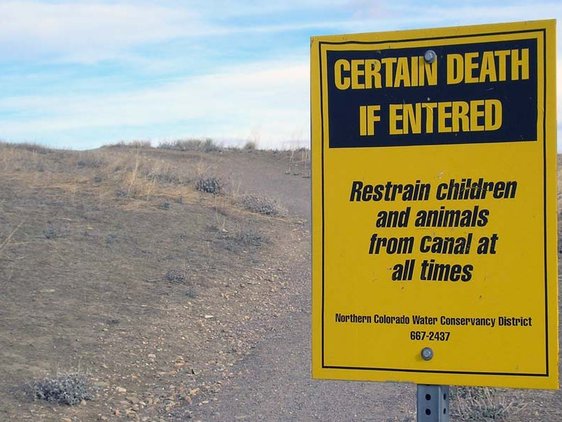
Subtle warning messaging for Boulder Reservoir, Colorado (photo: Ilan Kelman)
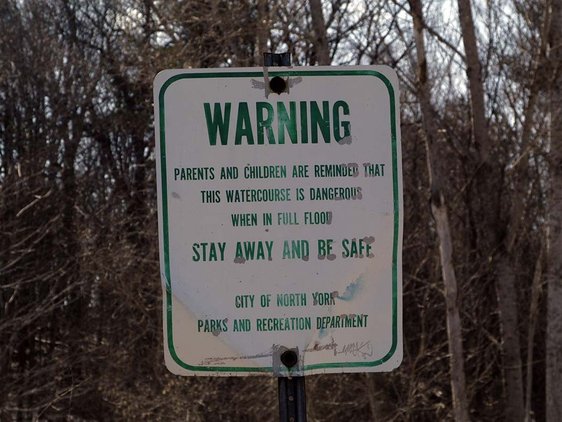
Flood warning sign in Toronto, Ontario (photo: Ilan Kelman)
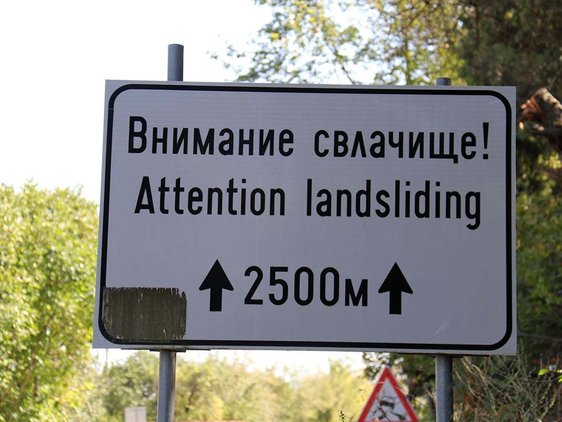
Landslide warning in Bulgaria (photo: Ilan Kelman)
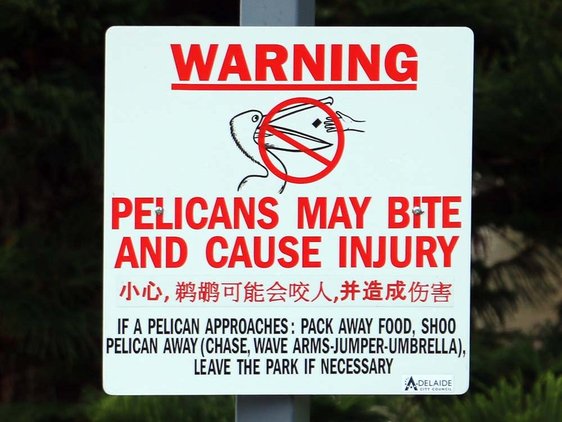
Warning of pelican dangers in Adelaide, Australia (photo: Ilan Kelman)
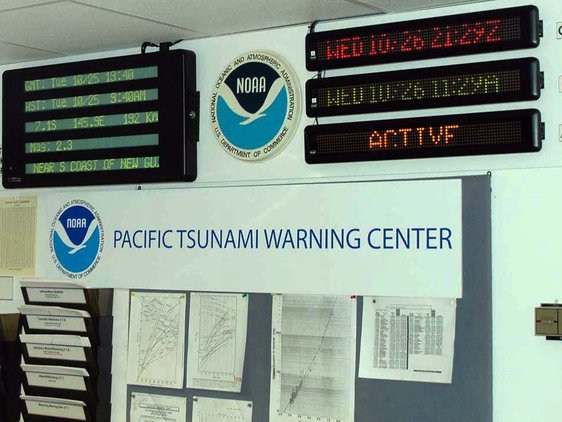
The Pacific Tsunami Warning Center in Hawai’i (photo: Ilan Kelman)
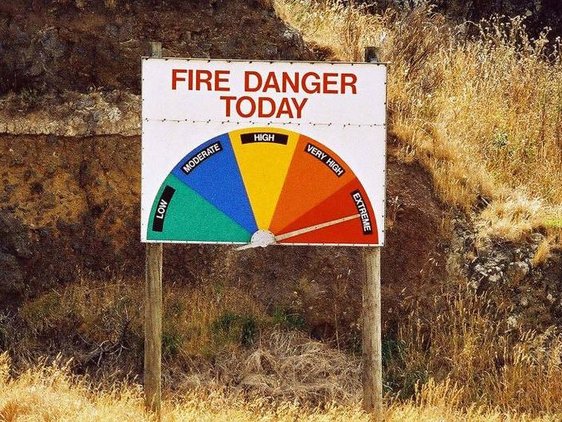
Warning of fire dangers near Christchurch, New Zealand (photo: Ilan Kelman)

Subtle warning messaging for Boulder Reservoir, Colorado (photo: Ilan Kelman)
Flood warning sign in Toronto, Ontario (photo: Ilan Kelman)
Landslide warning in Bulgaria (photo: Ilan Kelman)
Warning of pelican dangers in Adelaide, Australia (photo: Ilan Kelman)
The Pacific Tsunami Warning Center in Hawai’i (photo: Ilan Kelman)
Warning of fire dangers near Christchurch, New Zealand (photo: Ilan Kelman)
Warning about warnings
Implemented improperly, warnings can be one cause of a major disaster, by advising people incorrectly, harming people’s responses to further warnings, or distracting them from appropriate actions. To avoid these problems, warning systems should not be viewed as one-off, top-down, linear spurts of information and expert advice.
They instead integrate long-term risk reduction, damage mitigation, planning, awareness, and readiness within people’s typical activities. Creating a warning system means being directed over the long-term by people affected so that they are supported in generating their own information and analyses. They then encourage themselves for adequate preparation and response (see “Transparency” box).
These processes of creating and maintaining any system linked to warnings are as important as specific products which might be environmental monitoring data streams, automated alerts, and specific messaging. Thus, warnings and warning systems become social processes, serving the people affected with technology, external advice, and experts, but not relying on only these components.
Warnings Require Transparency
Transparency in warnings is needed at all stages, from the proposal to the set-up to the operations and maintenance. Transparency regarding data collection and decision-making influence people’s trust while warning-related activities need to be audited and people made accountable, especially to reflect for improvement.
We welcome feedback on this blog and our warnings work as well as collaboration opportunities to further explore warnings as social processes, especially in light of the experience across the Red Cross Red Crescent network, UN agencies, the private sector, and NGOs in using warnings and enabling early action for the “first mile”. Please contact us to discuss!
Further resources
- Assigning a Volcano Alert Level: Negotiating Uncertainty, Risk, and Complexity in Decision-Making Processes
- Forecasting by Analogy: Local Responses to Global Climate Change
- The Eruption of Nevado Del Ruiz Volcano Colombia, South America, November 13, 1985
- Warning for the 26 December 2004 tsunamis
- Early warning systems for pandemics: Lessons learned from natural hazards
- Europe’s catastrophic flooding was forecast well in advance – what went so wrong?
